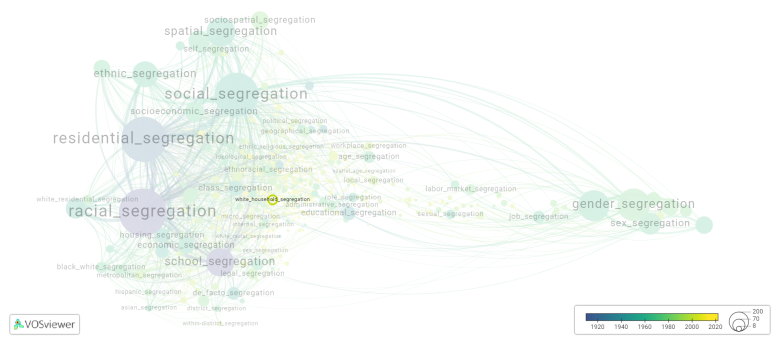White household segregation: Difference between revisions
(Creating page) |
(Creating page) |
||
| Line 10: | Line 10: | ||
Efforts to address white household segregation may include promoting fair housing practices, creating affordable housing options in diverse neighborhoods, and encouraging inclusive community development initiatives. It is important to work towards creating more equitable and integrated communities to foster social cohesion and reduce racial segregation. | Efforts to address white household segregation may include promoting fair housing practices, creating affordable housing options in diverse neighborhoods, and encouraging inclusive community development initiatives. It is important to work towards creating more equitable and integrated communities to foster social cohesion and reduce racial segregation. | ||
==See also== | ==See also== | ||
==Related segregation forms== | |||
White household segregation is frequently discussed in the literature with the following segregation forms: | |||
[[racial segregation]], [[residential segregation]], [[household segregation]] | |||
[[File:white_household_segregation.png|780x780px]] | |||
For the complete network of associated segregation forms, see: | |||
year of publication https://tinyurl.com/2235lkhw | |||
Louvain clusters https://tinyurl.com/2d8wg5n3 | |||
betweenness centrality https://tinyurl.com/223udk5r | |||
disciplines where segregation forms first appeared https://tinyurl.com/244d8unz | |||
==References== | ==References== | ||
==Notes== | ==Notes== | ||
Revision as of 14:39, 27 September 2024
Date and country of first publication[1]
2013
United States
Definition
White household segregation refers to the pattern of white individuals or families choosing to live in neighborhoods or communities where the majority of residents are also white. This form of segregation can occur as a result of personal preference, economic factors, or systemic factors such as discriminatory housing practices.
White household segregation can lead to social and economic disparities, as it can perpetuate racial inequalities and reinforce the marginalization of minority communities. It may also contribute to the lack of diversity and cultural enrichment in certain neighborhoods.
Efforts to address white household segregation may include promoting fair housing practices, creating affordable housing options in diverse neighborhoods, and encouraging inclusive community development initiatives. It is important to work towards creating more equitable and integrated communities to foster social cohesion and reduce racial segregation.
See also
Related segregation forms
White household segregation is frequently discussed in the literature with the following segregation forms:
racial segregation, residential segregation, household segregation

For the complete network of associated segregation forms, see:
year of publication https://tinyurl.com/2235lkhw
Louvain clusters https://tinyurl.com/2d8wg5n3
betweenness centrality https://tinyurl.com/223udk5r
disciplines where segregation forms first appeared https://tinyurl.com/244d8unz
References
Notes
- ↑ Date and country of first publication as informed by the Scopus database (December 2023).
At its current state, this definition has been generated by a Large Language Model (LLM) so far without review by an independent researcher or a member of the curating team of segregation experts that keep the Segregation Wiki online. While we strive for accuracy, we cannot guarantee its reliability, completeness and timeliness. Please use this content with caution and verify information as needed. Also, feel free to improve on the definition as you see fit, including the use of references and other informational resources. We value your input in enhancing the quality and accuracy of the definitions of segregation forms collectively offered in the Segregation Wiki ©.
White household segregation appears in the following literature
Fischer M.J. (2013). Black and white homebuyer, homeowner, and household segregation in the United States, 1990 2010. Social Science Research, 42(6), 1726-1736. https://doi.org/10.1016/j.ssresearch.2013.07.015
